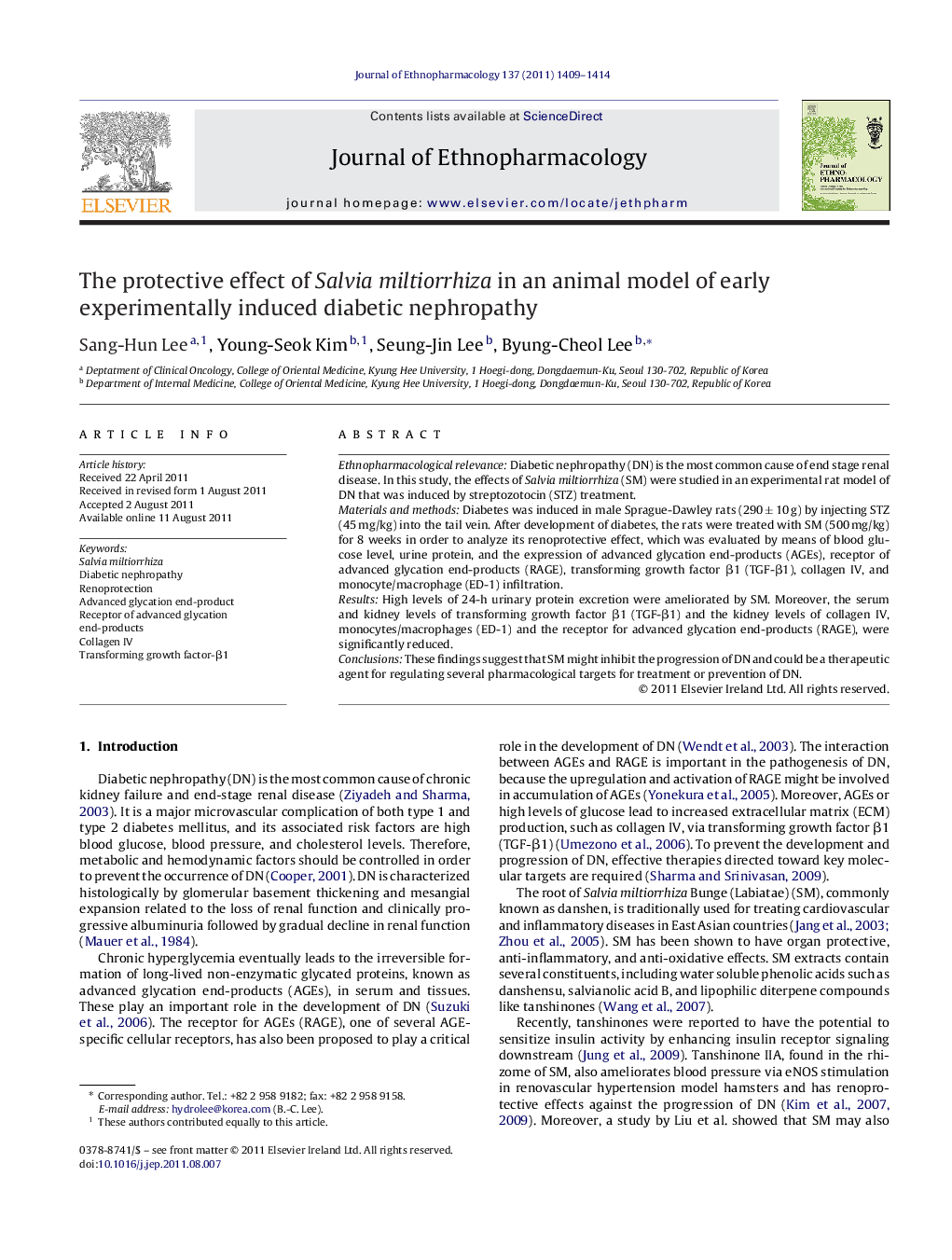| Article ID | Journal | Published Year | Pages | File Type |
|---|---|---|---|---|
| 5839443 | Journal of Ethnopharmacology | 2011 | 6 Pages |
Ethnopharmacological relevanceDiabetic nephropathy (DN) is the most common cause of end stage renal disease. In this study, the effects of Salvia miltiorrhiza (SM) were studied in an experimental rat model of DN that was induced by streptozotocin (STZ) treatment.Materials and methodsDiabetes was induced in male Sprague-Dawley rats (290 ± 10 g) by injecting STZ (45 mg/kg) into the tail vein. After development of diabetes, the rats were treated with SM (500 mg/kg) for 8 weeks in order to analyze its renoprotective effect, which was evaluated by means of blood glucose level, urine protein, and the expression of advanced glycation end-products (AGEs), receptor of advanced glycation end-products (RAGE), transforming growth factor β1 (TGF-β1), collagen IV, and monocyte/macrophage (ED-1) infiltration.ResultsHigh levels of 24-h urinary protein excretion were ameliorated by SM. Moreover, the serum and kidney levels of transforming growth factor β1 (TGF-β1) and the kidney levels of collagen IV, monocytes/macrophages (ED-1) and the receptor for advanced glycation end-products (RAGE), were significantly reduced.ConclusionsThese findings suggest that SM might inhibit the progression of DN and could be a therapeutic agent for regulating several pharmacological targets for treatment or prevention of DN.
Graphical abstractDownload high-res image (227KB)Download full-size image
